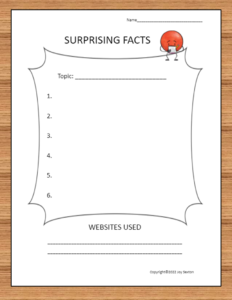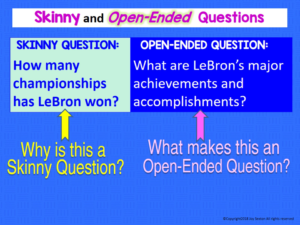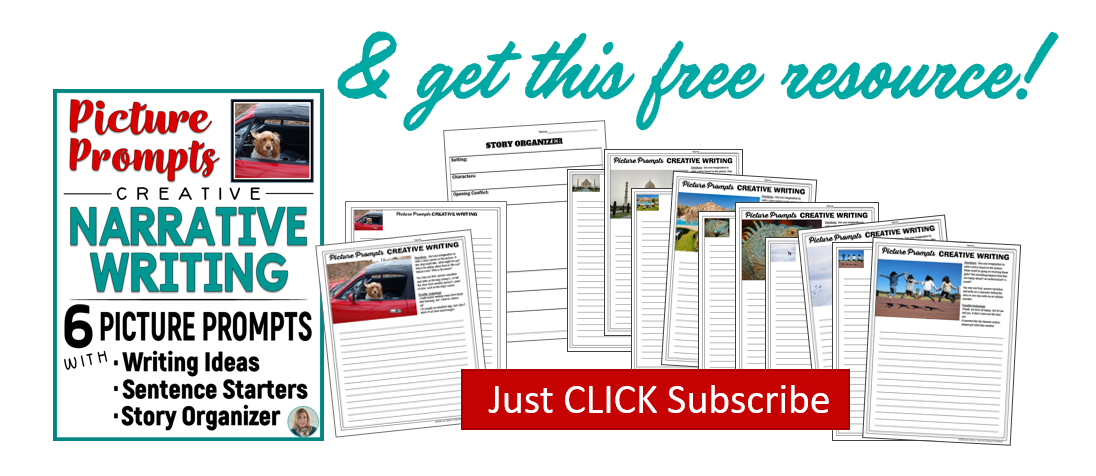When thinking about ideas for teaching research skills, teachers can easily become overwhelmed. That’s mainly because our standards list so many requirements for students to master! If your school requires a major research paper, you might need to start off with some smaller practice pieces. Do your students know how to paraphrase? Can they judge if a website is credible? Do they know how to compose an open-ended question? How about citing sources? Check out these activities that will help your students gain essential practice with research skills.
Ideas for Teaching Research Skills
1. Say It Your Way – One great place to start is getting students in the habit of paraphrasing. Choose an interesting topic and a short article to demonstrate. An online encyclopedia comes in handy here. We worked with information on a particular dinosaur. Project the article and with class participation, highlight 5 pieces of key information. This is the information students will be “taking notes” on. Then query the students how each piece of information could be stated in bulleted notes (without copying full sentences!). Model the bulleted note-taking as students complete their own copy. When the bulleted notes are complete, engage the class in composing new sentences that are paraphrased. Again, model writing this paragraph as students follow suit. Now the process of note-taking and paraphrasing should seem “doable” in their own research.
2. Surprising Facts – A fun way for students to dive into research is to give them a topic and simply task them with finding facts that are surprising. This activity works great with partners. Topics could tie in with a current class novel or story (such as “elephant” from The Giver) or even an author. Surprising facts about Gary Paulsen, Kwame Alexander, or Edgar Alan Poe make an interesting class discussion! Students enjoy sharing their findings. I devised a free handout where students can record the topic, their surprising facts, and the website(s) they used. Grab it in Google Docs and copy to your drive by clicking the link: https://bit.ly/3Nah9UB

3. Give Credit Where It’s Due – Most students understand that sources need to be cited. However, many remain unclear on the process. A demonstration using a citation generator will help. I like www.bibme.org , but if you google “citation generator” you’ll find a slew of them. I open a few tabs in advance with animal websites. To demonstrate, grab the URLs and insert into the generator. Cut and paste the citations to a blank document. Then you can show students how to indent and alphabetize. For practice, give students a list of several websites. You could also include a magazine article and a book. With a partner, have them construct the works cited using a generator, indenting and alphabetizing correctly.
4. Support an Opinion – Students love to voice their opinions, but need practice supporting them with facts. Lucky for us, there are loads of argument topics available free online. You can offer several topic choices, and students choose one and respond with their opinion. Next, have them locate 2-3 important facts or statistics that specifically support their opinion. Make sure to emphasize that the information will need to be paraphrased. And since sources were used, a Works Cited should also be added.
5. Good Question! – One purpose of research is to answer a question, so students need practice in formulating good questions. An open-ended question, one that requires more than just one answer, is the goal. Start by demonstrating the difference between an open-ended question and a “thin” or “skinny” question (not open-ended). One way is to project an image of a violin on your whiteboard. Then type or write out these questions: 1. How many strings does a violin have? 2. How is a violin made? Ask students which is the open-ended question and why. Then project another image. Ask for volunteers to formulate a thin question, and then an open-ended question. Once they understand this concept, let all students practice composing both thin and open-ended questions. This activity works well in groups. Each student contributes a topic.
6. Format is Key – A sure-fire way to get students excited about a research project is offering engaging formats for presentation. PowerPoint is well known by most students, but take time to demonstrate some other great options. Canva allows students to create awesome Infographics! Or how about a tri-fold brochure in Publisher? Students can make up a quick template with custom headings. Set a timer for 10-15 minutes and let students experiment with the possibilities. My students have enjoyed a Q & A format, using a template I created with PowerPoint. Even students who prefer typing their report in paragraphs can easily design a poster. Along with the paragraphs, just add images, captions, topic, and headings.
I hope I have broadened your ideas for teaching research skills. I think you’ll agree that students need time and mini-lessons to get comfortable with the procedures we require. A quick graphic organizer coupled with a short activity can help solidify the skills they’ll need.
Here’s another post I wrote that will give you more helpful ideas for teaching research skills: 10 Ideas to Make Teaching Research Easier






Leave a Reply